What would you do if you met the owners of a renown caffe in Italy that was destroyed by a major earthquake? Meet Riccardo Longo, founding partner of Gran Caffe L’Aquila, the Italian restaurant, caffe and wine bar just off of Rittenhouse Square in Center City Philadelphia. When Longo was touring Abruzzo, while writing a book on regional cuisine and wine, he met Stefano Biasini and Michelle Morelli, owners of the famous Italian caffe, which was destroyed in April of 2009. Longo invited Biasini (who won the World Cup of Gelato) and Morelli (who was awarded the highest rating for torrefaction from Gambero Rosso, which, in layman’s terms, means he’s a master coffee roaster) to Philadelphia, and after many ideas coming to fruition — including interior design built in Italy and shipped here — Gran Caffe L’Aquila was reborn in The City of Brotherly Love. GCA offers something for everyone — Italian coffees and pastries, panini and fresh salads, diverse Italian bites (like Arrosticini Abruzzese — grilled lamb skewers) and, of course, Biasini’s famous gelato, including savory flavors which top off special pasta dishes. Pancetta-infused gelato topping off authentic spaghetti carbonara? Indeed! In addition, GCA offers a special, weekly-rotating menu, featuring cuisines from all regions of Italy and intimate Italian cultural school classes, featuring discussions on history, tradition, culture and food and wine from various Italian cities. Recently we sat down with Gran Caffe L’Aquila’s founding partner Riccardo Longo, who was kind enough to share his (Chocolate Covered) Memories with us …
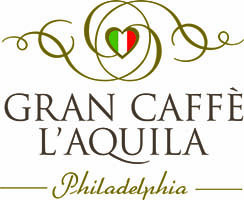
How did you end up in this niche of the industry? Any child/teenage food industry jobs?
I was born in Italy. So my earliest childhood memories were of Roman cuisine because my father worked in the upscale luxury restaurant-hotel business in Italy. So I was always around restaurants even as a child. Those are my earliest memories.
Then once we moved here, being very attached to my father and the culinary arts, I would go with him to work as much as I could. He’s also an amazing chef, and I was always inspired by how he could transform simple ingredients into soulful, delicious meals for our family. So on weekends, when I didn’t have school work to do, I would always ask him if I could accompany him to work. So from the time I was six or seven years old, I started working in restaurants. And I did everything from busing tables to dishwashing to cooking to prepping. Pretty much A-to-Z. By the time I was 12 or 13 years old, I was working on the kitchen line as well as waiting on tables. By the time I was 17 or 18, I was managing part-time.
After getting an MBA and working in international finance for a while, I found that, although I was good with numbers and producing, I actually was very bored and uninspired. So I found that the thing that I did as a little kid was really where my passion was. That’s what was fun for me.
So I returned to the business that I grew up in with an ethos of expounding authentic Italian culture and food. It was a true pleasure because I also got to work side by side with my father, which has been a true gift and blessing. He is a legend in this business and besides being an amazing father he has also been an amazing mentor to me through the years. My continued quest for authenticity is what led me to my good friends, gelato genius Stefano Biasini and master coffee roaster Michele Morelli, our partners and original owners of Gran Caffe L’Aquila in Abruzzo.
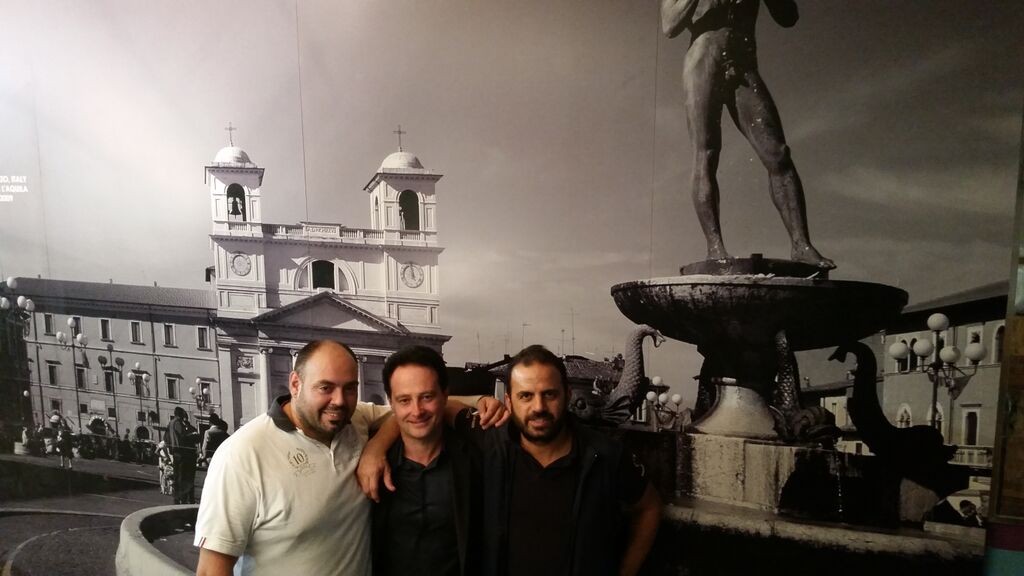
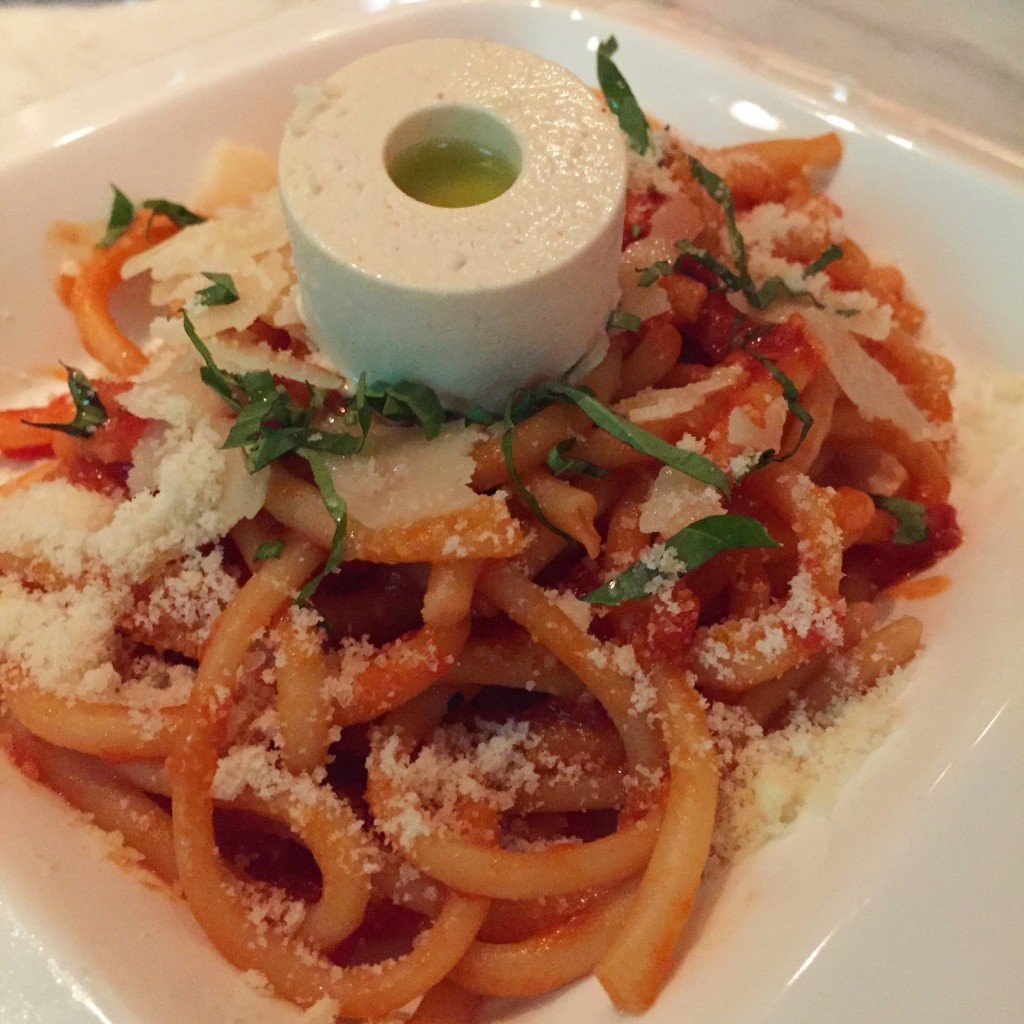
What are the stories behind Italian regional cuisines?
The story of Italian cuisine is a very unique story. More than being unique, it’s also very misunderstood here in the United States, which as an Italian-American, is something that can bother us. When I say Italian-Americans, I sort of grew up with one leg in each culture, because I would go back every summer. I love America, and I love Italy. And I feel that I’m part of both cultures, which is truly a blessing, because the cultures in their own way are so amazing. The one thing that upsets me a little here is how misunderstood Italian cuisine is.
I have always been fascinated with history and, from a young age, read a lot about the various regional and city histories in Italy. As I got older, I became fascinated by the way that each city’s cuisine was really based on its unique history. And so I started studying this and traveled to Italy more, visiting different regions and different cities. Eventually I would visit over 50 cities in depth, meeting with chefs, nonnas, historians and winemakers in each city. The more that I travelled, the more fascinated I became with the incredible diversity. For example, within Rome you have multiple cuisines in one city. You have the general Roman cuisine, which is internationally known as one of the best of Italy, which are dishes like the carbonara, Veal saltimbocca, bucatini all’Amatriciana, porchetta and many more. Within that though, you have a Jewish ghetto in the center of Rome that has its own spectacular cuisine. It has its own beautiful dialect actually. The Pope at one point erected a wall around the neighborhood, which restricted the Jewish population’s movement outside their neighborhood. They created their own dialect and their own cuisine, and it is spectacular. And that’s within a few blocks of the center of Rome. They basically created a micro-cuisine, a micro-culture. You have Testaccio on the outskirts of center, which is the old meat market district of Rome, whose cuisine is known as “Quinto Quatro,” which means the “fifth-fourth.” It’s basically the “Scarti,” the cuts from all the meats that no one wanted. Oxtail, intestines, all those kinds of fun things, which a hundred years ago, they just gave away to poor people. Today, it’s become haute cuisine. When you go to the five-star restaurants in Italy, they’re doing oxtail, they’re doing intestines. So it’s funny how these things evolve. And that’s sort of a story that you see repeating in Italy. The poor peasants, the nonnas, take simple products and make magic. They get creative, because that’s all they have. Poverty and need are a great stimulus for innovation. And with time, it becomes the food of the wealthy. And this is something that repeats itself. From pasta, to polenta, to the quinto quarto, the innovation of the poor nonnas becomes the foundation of the noble families’ banquets.
Rome is just a simple example of a city that has multiple cuisines within it. If we take this regional, the differences are spectacular. For example, if you go to the Alto Adige, and you look at Bolzano, you have a truly historically very interesting place that has changed hands and been influenced by Italy, Austria, Hungary as well as Slovenia and Dalmation Coast. And it’s created basically a cuisine that is founded more on the Austro-Hungarian than its historic ancient Roman roots. The cuisine today is Austro-Hungarian with Italian flare. So the typical Sunday dish that a grandmom will make in Bolzano is goulash, not pasta, and they don’t do it with pasta. They do it with canederli. Canederli is almost a German-style dumpling, but it is infused with speck, and it’s made with bread. The idea of it is basically gnocchi, but it’s made with stale bread. Again, another dish from poverty. So these cuisines tell the story of a city. It’s a beautiful thing.
And that’s really what became my passion and really how things started to evolve with me to eventually lead up to Gran Caffe L’Aquila. Because for the past six years, I’ve been going to Italy a lot. I’ve been every few months, and I’ve been going on culinary tours of various cities. I’ve been going to wineries to study the wines. And to really understand the cultural perspective of every city, where this food came from, why it’s there, what it is. And then talking with the chefs and honestly, most of the time, with the grandmoms. Because in the end, I trust a grandmom more than a chef. Because the chefs always change things. But sometimes the chefs are really excellent. But in my experience, the nonnas are the true authenticity. So I try as much as possible to meet with nonnas. A lot of times, I meet with a chef, he’ll invite me to his house, and then I’ll meet the nonna or mamma. And then I end up talking more with the nonna than the chef. Because that’s the root. The genesis is with the nonna.
It’s a very interesting thing. It’s a fun thing for us to expound on here. Because I believe most Americans don’t realize that Italy as a country is very young. But the idea of Italy as a united nation is only 150 years old. The Roman empire collapsed in the 400’s. You have 1400 years of chaos, where city-states emerged. These city-states developed their own cultures, histories, foods, wines. And that’s the true history of Italy. Italy is not a nation that in any way is homogenous. It’s actually very much that each city is very independent, fiercely independent. Still to this day. Most Italians will not tell you that they’re “Italian.” Unless they are somewhere outside of their element. If they’re in America, they’ll say they’re “Italian.” In Italy, they will not say they are “Italian.” They are Roman, they are Neapolitan, they are Sicilian. Because the country is so young. Honestly the idea of “Italy” is still a thing that is up for debate. There are a lot of regions that want to leave. It’s something that is an ongoing conversation there. That’s something that, for Americans at first, is a little confusing. Until you start looking at the history of it. And you realize that Italy was, in a sense, the original America. Its up for debate whether we even had an indigenous population. Maybe the Etruscans, whose story of displacement parallels the American Indian experience in many ways. But historians are divided, many actually have concluded the Etruscans came from Asian-Minor. So you basically have a country that was invaded from all sides. From the Arab nations, from the African nations, from Northern Europe, from the Adriatic. You basically had the whole world converging on this peninsula, and that’s really what Italy is. The original melting pot. And that’s reflected very much in the cuisine. And that’s the fascinating thing for us. And that’s what we love to explore here with our weekly menus. Our guests are fascinated with the depth and complexity of Italy.
You know in Italy, the typical meal is a little different from ours. The portions might be a little smaller. But they’ll do an antipasto, a pasta course, and then a meat course. And then typically the dessert course is a fruit. The sweets are typically not so common as they are here. The idea of desserts is more of a Sicilian thing that has sort of moved up, and it’s becoming more common. For most traditional Italians, it’s more fruit and cheese, maybe something very light. Because they have already eaten a lot. The one thing that Americans are very surprised about when they go to Italy is that the Italians are all very fit. They are very stylish. They are slim and fit. It’s because they eat well, but they don’t overdo it. So they have these courses, but they are not loading up on sweets. They balance. You hear about the Mediteranean diet, and it works. If you eat food from the land, the sea and small portions, and olive oil, a glass of wine, all those things that are sort of the foundation of that diet, it works. If you go to Italy, it’s a testimony to it. The ironic thing is if you go there now, the “fast” culture is starting to hit Italy. So you’re starting to see McDonald’s and fast-food is arriving there. And it’s having a little bit of an impact. The Italians are changing a little bit, too. Because you are having a little bit of that influence.
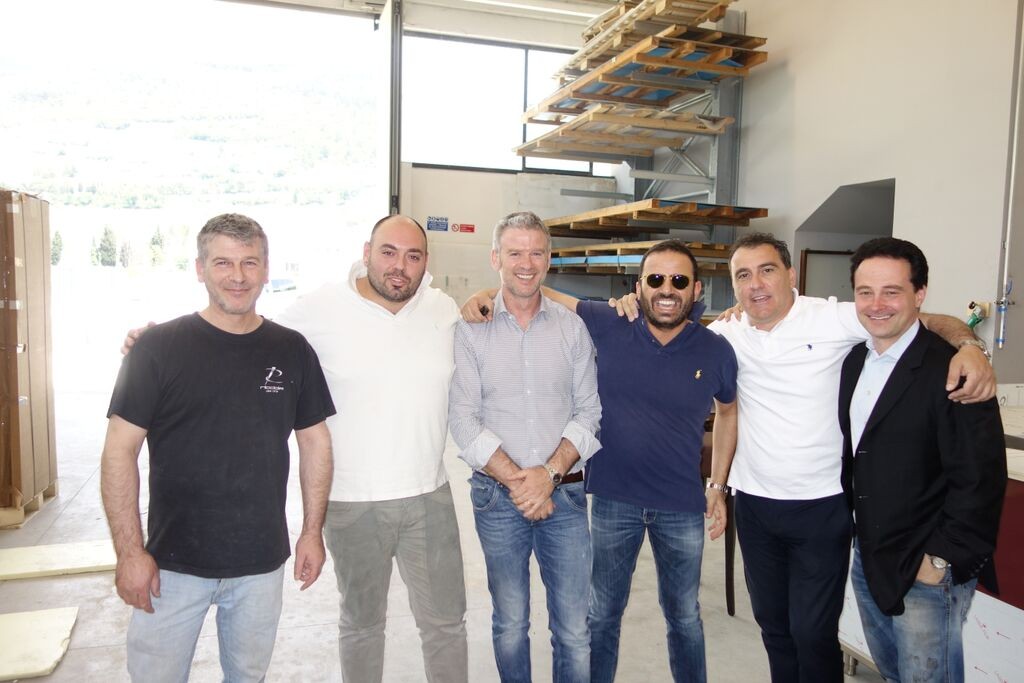
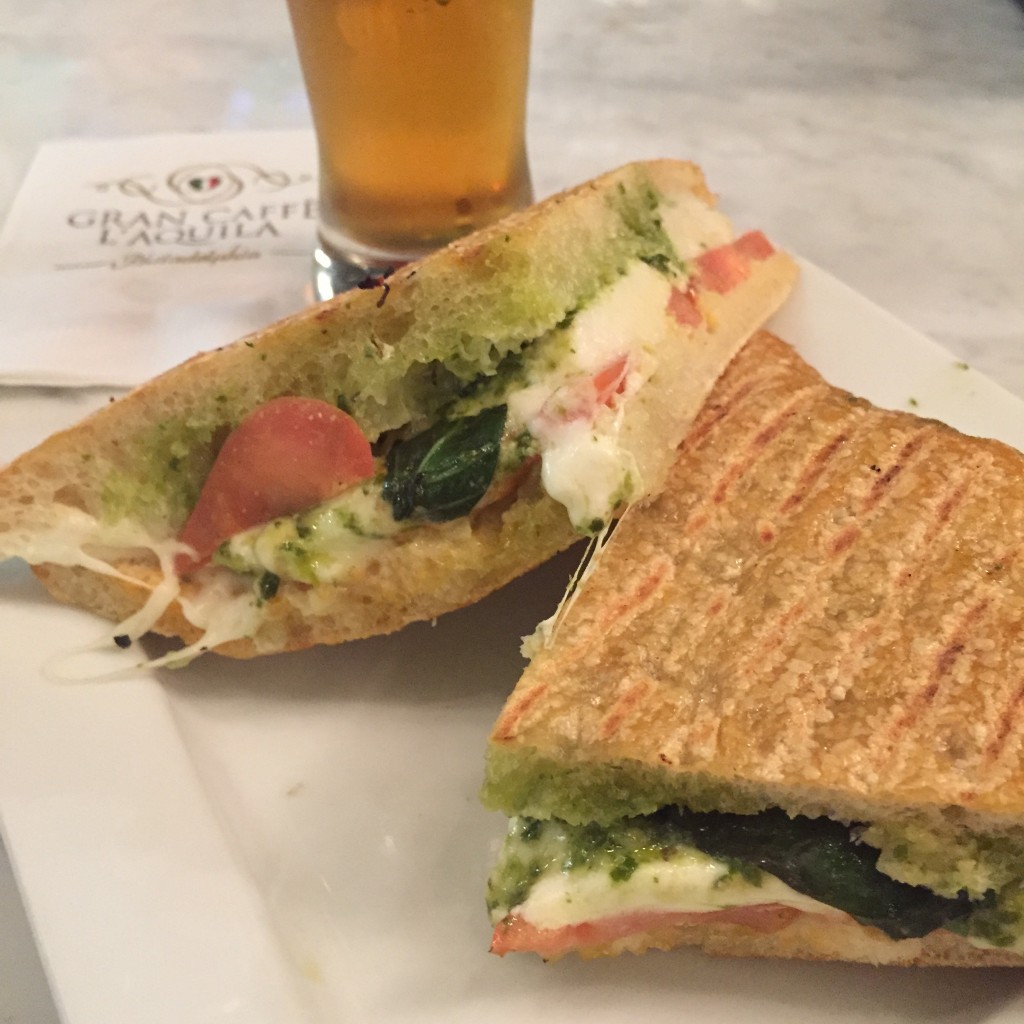
What are your earliest childhood memories of food?
Particularly those memories with my family were of Roman street food, which is amazing. I always had a certain passion for it. Everything from pizza Bianca and Roman version of arancini (suppli al telefono) and all kinds of different fried, food which are typical of Rome. And of course, I had my mom, aunts and family that made spectacular homemade food for me. I have good memories associated with that. So of course, it all starts there, those childhood memories of homemade food, the amazing street food, being in amazing environments that my father would put me into with restaurants, hotels, that were top class in Rome. So that was, as a child, very exciting.
Then there’s my father’s homemade cooking, which is second to none. His tomato sauce and ragu are something that my brothers and I often talk about and look forward to. He is a true virtuoso in the kitchen, with a soulful touch creating layers of flavor from simple ingredients. His style of cooking is the essence of “Italian cooking” for me.
Even after we moved here to America, we’d go back every summer and revisit those things. My grandfather had a vineyard. So he would make his own wine, make his own olive oil, his own fruit, his own vegetables. We would use that to cook with. My aunt and other family would make unbelievable homemade pastas, homemade sauces, using the tomatoes that were grown in the garden. So these are early influences that laid the foundation as far as what true authentic homemade Italian food is.

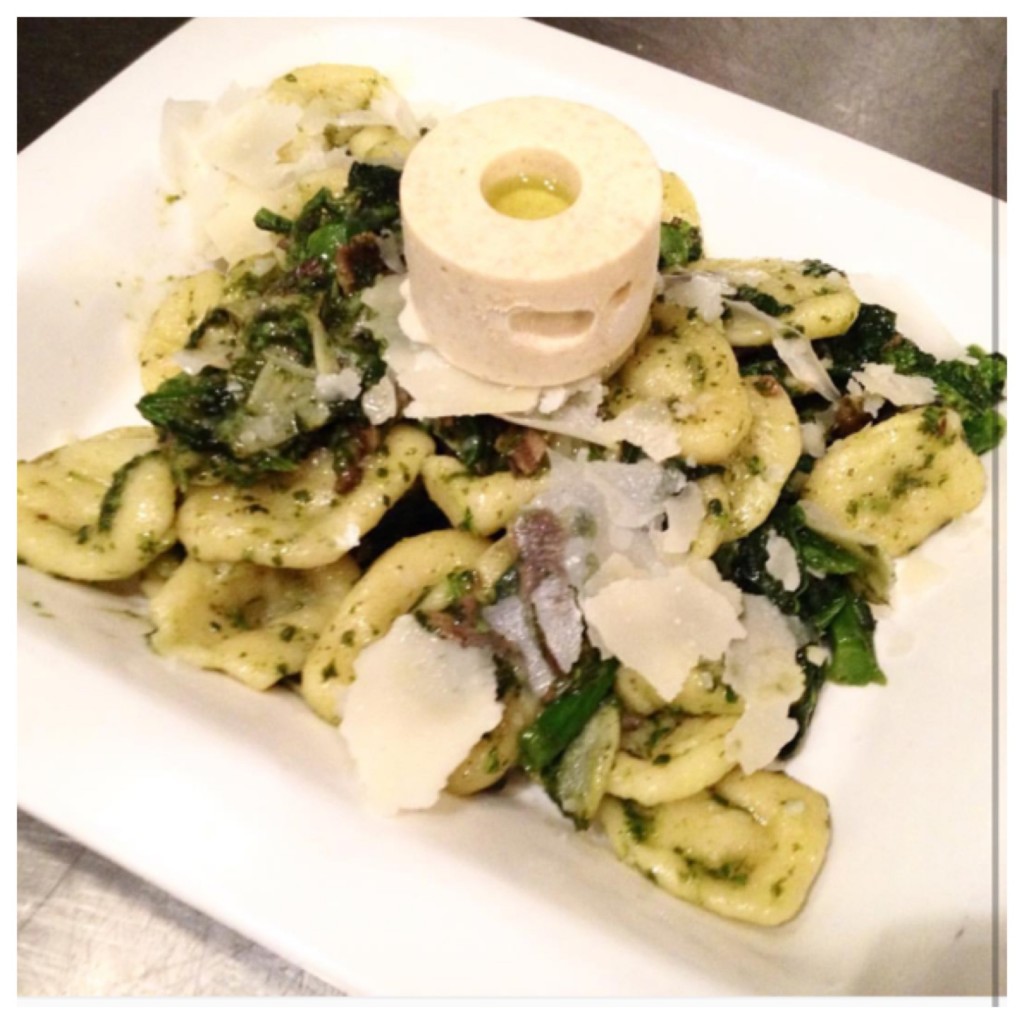
Any particular food memories your remember?
One funny thing that I remember, and this has to do with drinking. The Italian culture is very different for the fact that kids drink wine at dinner with family. Here people think it’s crazy. But on this same level, in that era there was not this problem with alcoholism in Italy as we have here. It’s understood culturally that wine is part of dinner. Of course, the quantities are low, and it’s typically mixed with sparkling water or Gassosa for kids, so there is not a significant alcohol intake. One of my fondest memories is drinking vino with my nonno. I would spend time on his vineyard, then help him with the winemaking. Then of course we would try it. Now, I’m talking about 6 years old or so. He would give me a Gassosa (Italian Sprite), and then put a little splash of wine in there. Then I asked him if I could try it straight, and oddly I really liked it. It’s probably the genesis of my passion and love for the poetry of wine and winemaking. That’s sort of how the nonni taught us how to enjoy wine with food.

What foods remind you of childhood? What were your favorite foods growing up?
In Rome as a child, next to our apartment, we had a pizza rustica place. The style of pizza is called pizza al taglio or pizza Romana. It’s a Roman-style, electric-oven pizza. It is basically pizza that they make on trays, and you order by the hectogram. Based on the amount of hectograms you would want, a lady in what seemed like a lab coat would cut the pizza with giant scissors. For a child, it was all very theatrical. We’d pass this place every night on the way to our apartment. And every night, I’d beg my mom in Italian, “Can we stop at Pizza Rustica?” and “Please, please, please!!!” And so my favorite flavors, at four or five years old, which I still remember vividly, there was a Marinara – just a simple tomato sauce and oregano. So simple, yet Wow! What a memorable flavor sensation. They’re using the Roman tomatoes. Crazy good. Then there was one – which you don’t see as much these days, but back then it was in style – was a white pizza with potatoes and a little bit of a béchamel – which was more of a sustaining, hearty pizza. I remember I’d go back and forth. I preferred the red, but I remember that I would switch off to the other one. And they also did roasted chickens with extra virgin olive oil and rosemary and the roman suppli al telefono, which were intoxicating rice balls with a mozzarella center, which when you opened the rice ball in half and pulled the halves away from each other, the mozzarella in the middle would stretch into what looked like a telephone cord. Hence the name. I just remember how decadent this all was as a child. It was street food, but it was so amazing that I remember every night driving home and strategizing on how I would get my mom to stop in.
Another memory is family making the homemade pastas, I had family basically between Naples and Rome. So it was a mix of Roman dishes and Neapolitan dishes. As a kid, I loved the Amatriciana. It’s a typical sauce of Rome. So that’s a sauce that I loved. Obviously the carbonara. The ragu that we would make at my aunts. They would basically slow cook the fresh tomatoes with whatever meats they found. It could be a chicken or rabbit that were locally sourced. The natural products, the artisanship of my aunts and grandmom doing that. They just created these aromas and flavors that you never forget. And the hand-rolled pastas that my aunt made with simply a rolling pin and a knife. These are things for me, which are sort of like measuring sticks. I say, this is the way it needs to taste. We strive to hit those levels. Because that’s “Italian food” at its peak. It’s something done from tradition by someone in the family and done with passion and purity. In the end, they cook with passion. Because they are cooking for the family and they want everyone to enjoy it. So they take it very seriously. They are giving everyone samples. “What do you think? Do you like it?” Eventually they know they are getting it right. And for us, it was very different, because we were coming and going. For us, they were very sensitive. Asking if we liked it because we lived in America. Of course, we loved those flavors just the way they were. We didn’t want anything changed.

Were you a picky eater as a kid? Any foods you couldn’t stand growing up? Have you overcome those childhood fears or do they still remain to this day? Any stuff you loved eating as a child that you would never eat now?
As far as Italian food, I liked everything. The one thing that surprises me, one dish that I liked as a kid, which was popular was anchovies. I’m amazed how off-the-map they are now. They are such an essential ingredient. Even if you look at the ancient Romans, they used anchovies as a foundation. For me, it’s almost like garlic. It’s fundamental. And it’s surprising to me how it’s sort of fallen off the map completely, even with pizzas. When one goes to Naples – the birthplace of pizza – and order the Napoletana, which is basically the iconic pizza of Naples. It’s tomato sauce with anchovies. That’s the Neapolitan pizza. Whenever I’m in Naples, that’s what I get, and it’s amazing. Here, as a kid, I’d see pizza with anchovies. Anchovies were popular. Now when you see anchovies, people are not into them. And it could be that there’s a lot of bad quality anchovies that is giving them a bad rep. It’s a bizarre thing to me how they have fallen out of favor.
For me, personally, I was the kind of person that would always try anything. Whether it was intestines or vegetables. Everything. Again, because I came from a restaurant background. My father would always come home and experiment, so for me it was always very intriguing.
The only thing I could say that there was one spice as a kid that I didn’t like then but I like it now though. It has nothing to do with Italy. It’s curry. For whatever reason, I just didn’t like curry as a kid. Now I do. So that’s my spice evolution.

Did you immediately like American food as a kid new to the country? Did you like fast food?
I was about five when we moved to America. I was different because I grew up with Italian food in Italy. So my friends would have birthday parties at McDonald’s, and I would eat it, but I didn’t necessarily like it. I liked the fries. But I didn’t like the burgers. I never really was a fan of fast food. But as far as American food, as a kid, when we first came to America, we lived in South Philly. I don’t think it even occurred to me that we left Italy. Because it was an Italian community in South Philly. So we were still eating all Italian food. Even at home, we were eating mostly Italian food.
I always had a passion for pizza. It’s my favorite street food. So the one difference for me was that the pizza was very different for me here in America. But I liked it. I realized that there was a lot of bad pizza here. Even as a kid, I quickly realized that this one place was good and this other place wasn’t. So there was definitely that. There was a lot more desserts here also. I enjoyed things like apple pie and key lime pie. And sort of all-American desserts that you’ll never find in Italy. Even something like lemon meringue. Bright flavors that weren’t on the radar for me. Those types of desserts were a cool experience. I remember as a kid, we would go places and I would see the desserts, and I would make a mental note that I wanted to have something at the end because it was totally different. And as a kid, I really did enjoy it. Even chocolate chip cookies, because the cookies we have in Italy, they’re not as sweet, they’re just different. So everything here was a little sweeter. So as a kid, all the all-American desserts made an impression on me right away, because they were all so different.
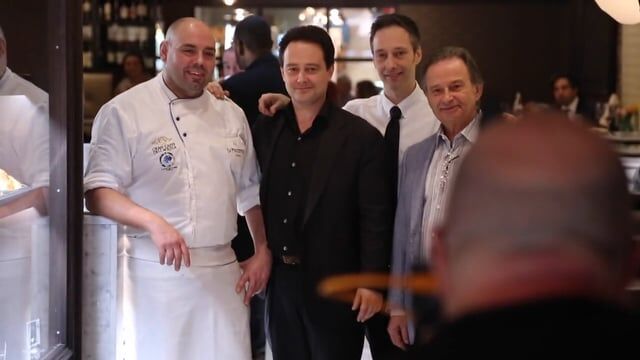
Any childhood cooking accidents in the kitchen? Any as an adult?
I can’t tell you how many times I would cut myself, burn myself, do stupid things, especially as a kid. When you’re a kid in a kitchen, everyone would say, “Watch out for him.” So I would say the funny thing is the chefs were watching out for me, because I was a silly, little, inquisitive kid in the kitchen. There was a sort of 5-foot buffer between me and the rest of the guys for their safety more than mine.
What’s your take on the modern food world (from Whole Foods to franchises like TGI Friday’s and Starbucks, from the Food Network to Groupon, from Yelp to foodie bloggers)?
I try and avoid restaurant chains. My daily menu is made up of a healthy mix of Mediterranean dishes. Whenever possible I use all natural and organic ingredients. I am a fan of Whole Foods and their philosophy. Most restaurant chains today do not serve “Food;” they are serving what I term as “Food Products.” It’s something that started as “food” in theory but has been modified through processes, chemicals, preservatives, etc. to achieve a flavor profile that is targeting a certain demographic. I am definitely not in that demographic, and I suggest to everyone I know to read up on and understand where the food they are eating is coming from. Knowledge is power, not only for eating tastefully, but also in controlling the destiny of our long-term health. My grandfather lived robustly to the age of 97 with a simple Mediterranean diet. He’s my role model.
As far as Starbucks, my coffee roaster partner, Michele Morelli, who represented Italy at the g8 summit for coffee culture and has Gambero Rosso’s highest rating for coffee roasting, was so furious when I took him to a Starbucks that it was one of the main reasons he decided to leave Italy and come here. A cappuccino is an icon of daily life in Italy, a velvety work of art featuring 2 ounces of espresso and 4 ounces of milk and foam, expertly prepared. As a joke, I ordered him a “Venti” Cappuccino, and he lost it. The idea of a 20 ounce cappuccino is a farce, but then there was the issue of quality and execution, which upset him greatly. He now roasts all of Gran Caffe L’Aquila’s proprietary blends and has a staff, that he’s trained, making espresso and cappuccino to Italian standards. For him, it’s a project of expounding and educating Americans what true Italian espresso and cappuccino is. Our guests love it. Stefano, our partner who is the Gelato Champion of Italy, also believes in educating and expounding culture through his amazing gelato and dishes from Abruzzo. It’s a lot of fun for our guests.
I think that the Food Network has some fun and interesting programming. I personally prefer more of the informational types shows over the competitions, but honestly I don’t watch much TV in general.
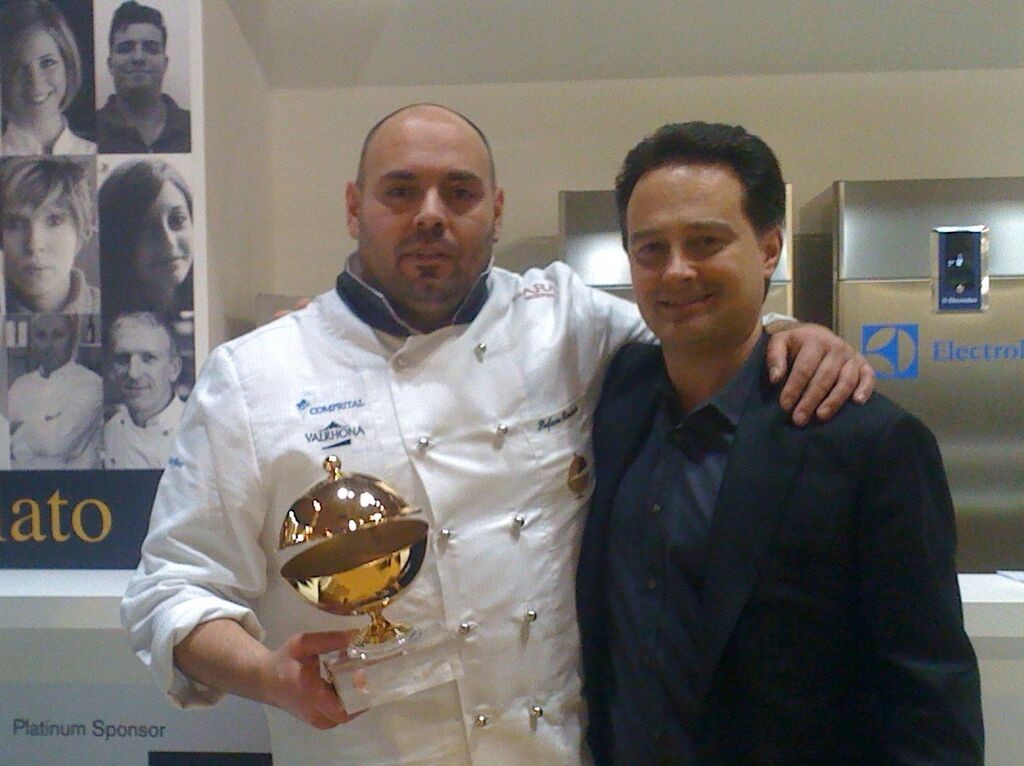
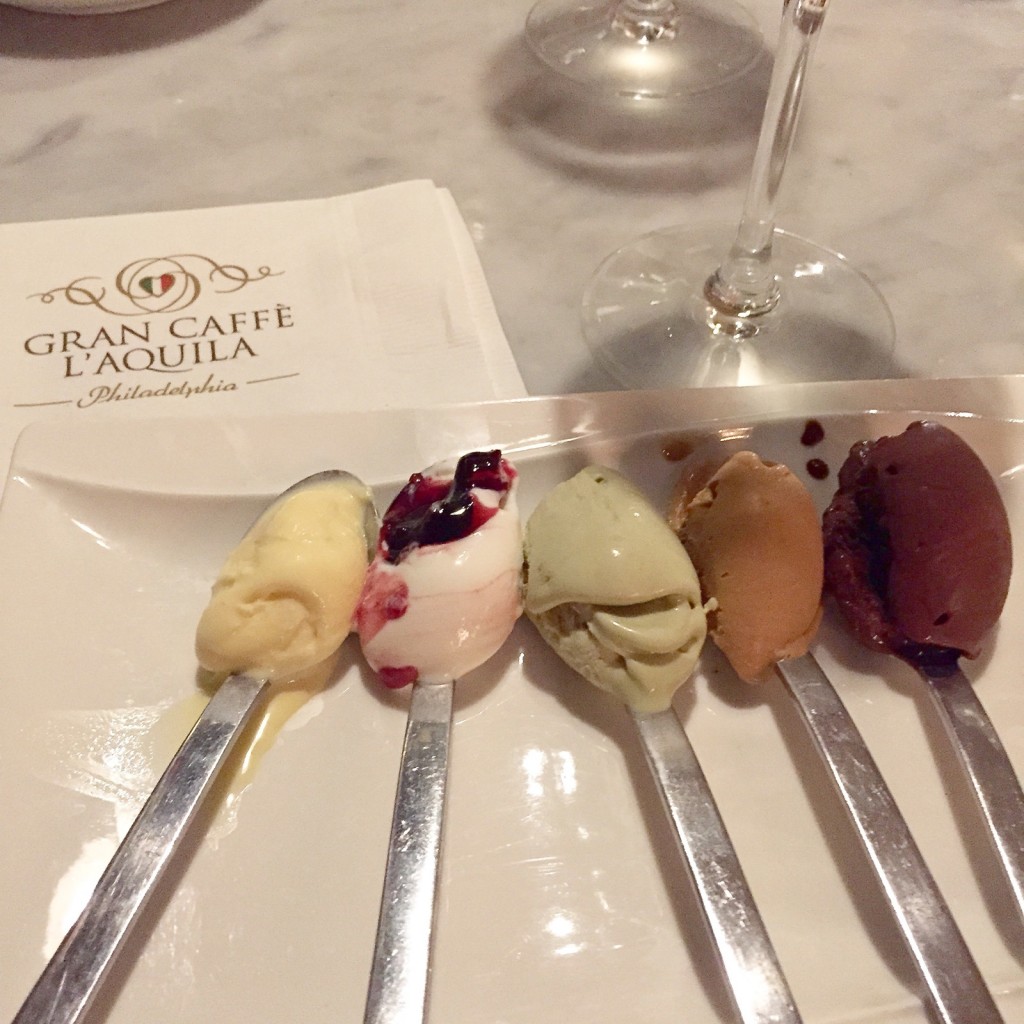
What do you think of the modern Italian food world in America (from franchises like Olive Garden and Carrabba’s to fast food pizza like Domino’s and Papa John’s)?
When Italians from Italy come to America they are typically in shock and awe as to what “Italian” restaurants are serving. It may come as a surprise to many, but Italian-American staples such as chicken Parmesan, spaghetti & meatballs, pepperoni pizza, garlic bread and Italian hoagies (to name a few) are not items that one will find on any menu in Italy. That is not the bad part though, as in the end we can look at Italian-American cuisine as an evolution of southern Italian cuisine by Italian emigrants here. The larger issues are the poor quality of ingredients used and poor execution of chain restaurants. The most annoying aspect of all this is when a classic dish such as Carbonara is modified beyond recognition. At Gran Caffe L’Aquila, it’s our best selling dish because we actually make it adhering to the classic Roman recipe, without adding cream, onions or subpar bacon as is unfortunately often seen elsewhere. The fundamental problem with these chains again is poor quality ingredients and poor execution. To make up for it, they throw in a hodgepodge of ingredients to confuse one’s taste buds into thinking the dish is well made. The magic of the original is the simple delicious ingredients executed properly. Thus, it is no surprise that it is uncommon to see a Native Italian dining at “Italian” chain restaurants in the United States.
I think pizza is on a much better trajectory than traditional Italian food. I’m a fan of all types of American pizza from New York-style to Chicago, when it’s made with passion and from scratch. With a little research, I seem to find a great pie in every city I visit. Although these American style pizzas are delicious when prepared in an artisanal manner, my true love is Roman pizza. The brick oven-style Roman pie is thinner and lighter than Neapolitan. The options for good Neapolitan and Roman pizza seem to be growing each year here in Philadelphia, which is fantastic news. As far Domino’s or Papa John’s, what I said earlier regarding chain restaurants applies in the industrial pizza world also.
What recipe do you want to share with us?
When I think of classic Roman dishes like Bucatini all’Amatriciana, Carbonara, or Cacio e Pepe, I think of my Aunt Luciana. Well, technically she’s my cousin Dario’s mother, but she always felt more like an aunt to me. When I lived in Rome in my 20’s, she would always invite me over for a homemade Roman pasta escape. She would also drop off at my apartment heavenly specialties like homemade zuppa inglese or a brodetto of pasta e ceci (chickpea soup). Just recently she suddenly passed away, and our family lost a wonderful, giving woman who was the epitome of a nonna, mother, wife, as well as school teacher. Besides all the great memories she leaves us, she also sets the standard for Roman cuisine. The cooking of a nonna is true soul food because it comes from love. This is her recipe for the Carbonara which she showed me many years ago. Enjoy my aunt’s Carbonara!

***
For more on Gran Caffe L’Aquila, visit GranCaffeLAquila.com and follow them on Facebook, Twitter and Instagram.
